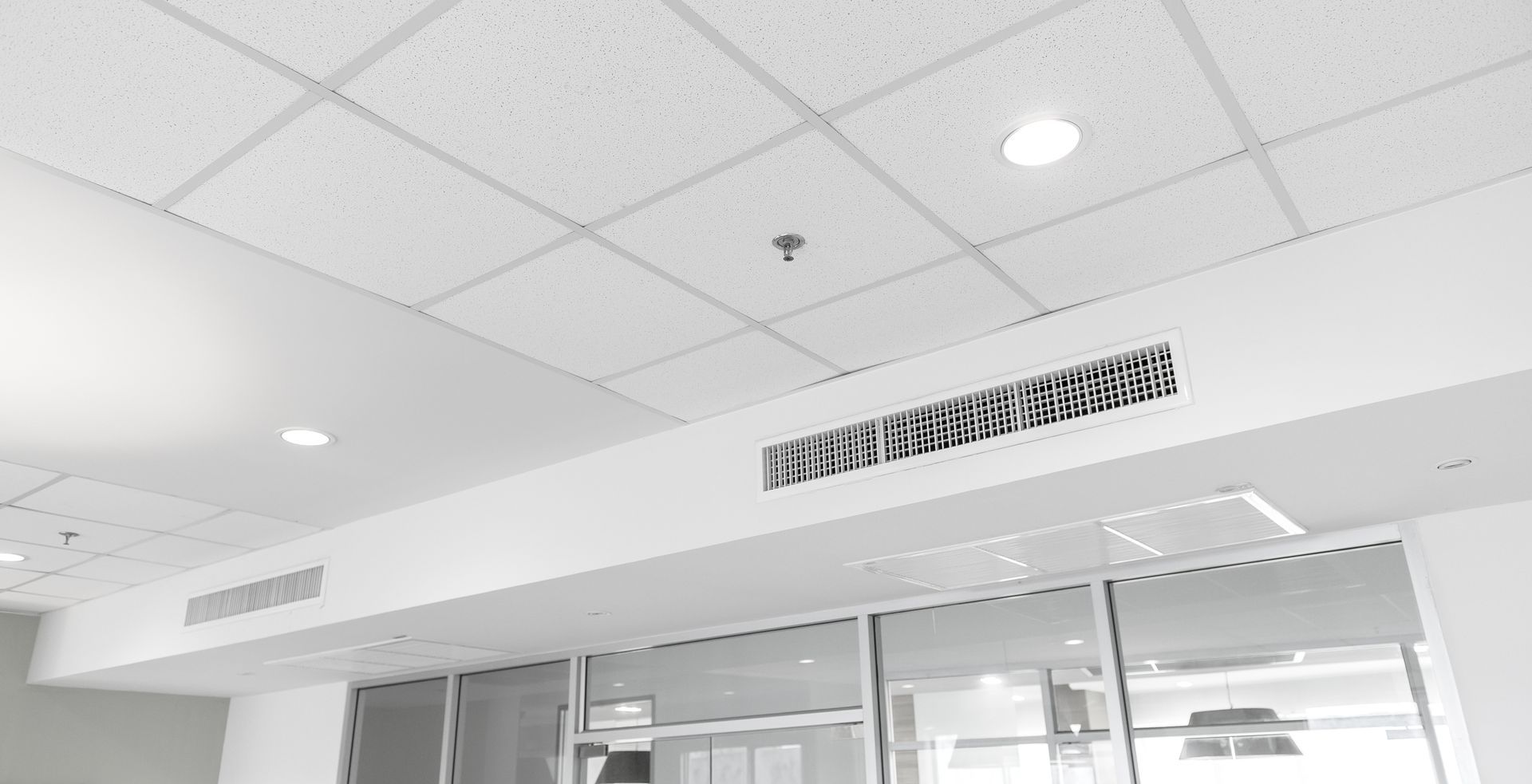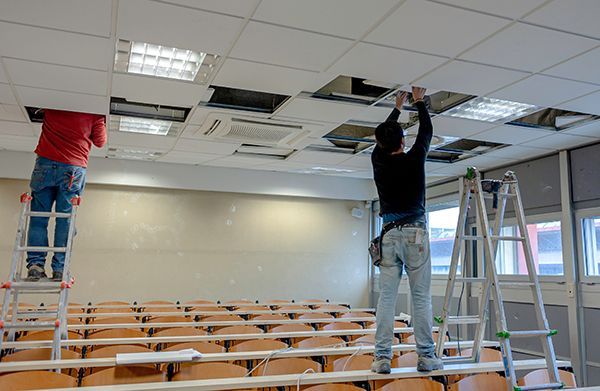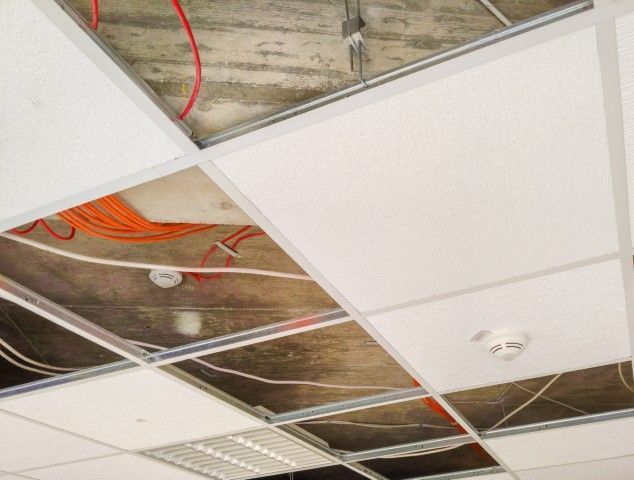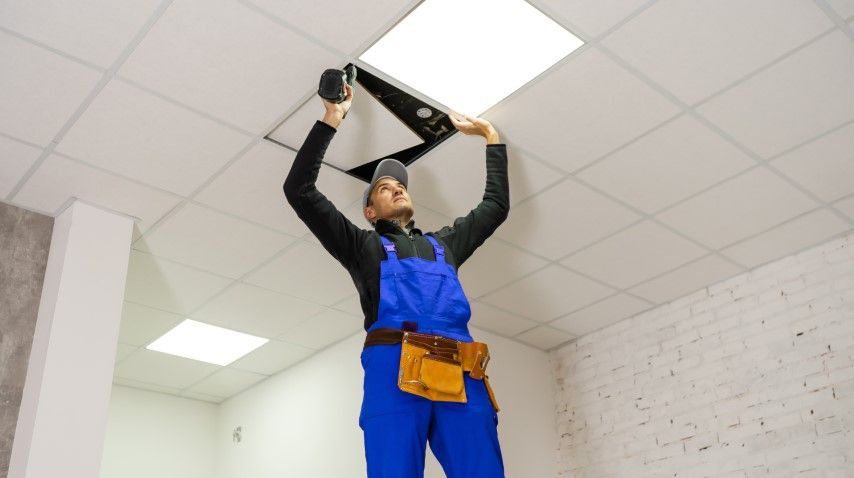Acoustical Ceiling Panels for Effective Noise Reduction
Struggling with noise in your home or office? Acoustic ceiling tiles, also known as drop ceilings, are specially designed to help minimize noise. With their lightweight design and a variety of styles to choose from, acoustic ceiling tiles offer both practicality and low maintenance appeal. Say goodbye to distractions and hello to a more peaceful space with acoustic ceiling tiles.
Is the main purpose of acoustic ceiling tiles to reduce noise?
While acoustic ceiling tiles (ACTs) are designed mainly for noise reduction, they are very commonly used as an affordable method of hiding unsightly pipes, wires, and ductwork that are visible at your ceiling.
ACTs are made from a variety of materials and are available in diverse designs, colors, and textures to suit different aesthetic preferences as well as functional requirements such as light reflectance and mold, mildew, sag, and fire resistance.
Thanks to their removable panels, acoustical ceiling grids allow easy installation and easy accessibility for quick changes in designs like switching from plain white to more vibrant colors and adding new room features such as lights or ventilation systems.
How well do acoustical tiles block noise?
When properly installed, acoustical ceiling panels can significantly minimize noise, measured by their Noise Reduction Coefficient (NRC), Ceiling Attenuation Class (CAC), and Sound Transmission Class (STC) ratings.
NRC, measured by a number between 0 and 1, is a simplified measurement of how well a material absorbs sound, with 0 being perfectly reflective and 1 being completely absorptive. For example, a tile with an NRC rating of .70 absorbs 70% of sound — perfect for busy offices, bustling restaurants, and lively classrooms.
CAC, with ratings ranging from 25 to 50, assesses the ceiling's ability to block sound from bouncing through adjacent closed spaces that share a common airspace when the wall does not extend full height. A higher number indicates better capabilities for blocking sound. For instance, a CAC rating of 40 indicates excellent sound-blocking properties, ideal for conference rooms, therapy offices, or medical exam rooms where privacy is crucial.
STC, often ranging from 25 to 70, evaluates the ceiling's ability to block sound transmission through walls and ceilings. The higher the rating, the better the panel filters sound from another side of the partition. For example, an STC rating of 60 makes minimal sound transmission possible between rooms, which is very useful in libraries and residential apartments.
Combine good NRC, CAC, and STC ratings together, and you have a space where sound is crisp and clear and won't disturb others. To achieve these mentioned ratings, acoustic ceilings come in various thicknesses, densities, and material compositions. If you need to install a specific type, our acoustic ceiling tile contractors can source the particular kind of panels that suit your purpose.
What are ACTs made of, and what ACT type should I install?
Ceiling tiles, which include acoustical ceilings, are typically made from various materials designed to offer both functional and aesthetic benefits. Common materials used in the construction of ceiling tiles include mineral fiber, fiberglass, polyvinyl chloride (PVC), starch, perlite (a form of natural glass), and clay. Acoustical ceilings are tested through ASTM C 423, which is the predominant standard for sound absorption in the US.
Based on your needs, there is a wide selection of tiles to consider. For example, fiberglass is more effective at noise reduction than mineral fiber. However, the low density of fiberglass ceiling panels allow them to be extremely resistant to moisture and sagging but hinders their ability to contain sound. PVC ceiling tiles are known for their durability, moisture resistance, and easy maintenance, making them suitable for areas with high humidity levels. Durable plank ceilings are made from wood fiber byproducts, while coffered ceilings are crafted from high-performance engineered resin and rigid PVC. Metal ceiling tiles are made of real metal, which has good CAC ratings.
Overall, the choice of material for ceiling tiles depends on factors such as desired aesthetics, acoustic performance, and environmental conditions. Note that insulation must never be placed behind fire-rated ceilings without prior approval from your building code official. To discuss ACT types further with a professional, our acoustic ceiling tile contractors can offer help in suggesting the best panel types that fit your needs.
How did ACTs Evolve into a Sound-Absorbing Ceiling Option?
The roots of acoustic ceiling tiles trace back to their initial usage in 14th-century Japan. Made of wood and metal bars arranged in geometric patterns, they were first used for aesthetics and to conceal the unfinished surface above them. Fast-forwarding to the 1950s, US patent-holder Donald Brown is credited as the inventor of these acoustic ceilings, presently known as t-bar ceilings, false ceilings, suspended ceilings, grid ceilings, drop-in ceilings, drop-out ceilings, ceiling tiles, or ACT ceilings (acoustic ceiling tiles). These ceilings have evolved into versions with enhanced visual appeal, catering to a wider range of architectural styles and preferences. Additionally, drop ceilings offer quick and easy installation and provide easy accessibility to pipes, tubes, and ducts in modern structures because each panel can be lifted out of of the grid with a single hand.
Despite their other functions, the significance of these acoustical ceiling panels lies in their capacity for effective noise reduction, making them a sought-after solution for blocking and absorbing sound in homes, offices, and other commercial buildings.
Where Do I Find a Tampa ACT Installer?
Already decided or have questions? Look no further! Call 813-590-4048 now or click here to avail the exceptional services of Tampa’s best drop ceiling contractors.
Our Tampa-based team has established a strong presence throughout the Bay Area. Trust our expert acoustic ceiling tile contractors to elevate your commercial space effortlessly by contacting us now.
Learn more about
the benefits of acoustical ceilings and how we install them.
Can drop ceilings be installed in existing spaces, or are they mainly for new construction?
Whether you’re renovating an office, or constructing a brand-new building, acoustical ceiling tiles offer flexibility and practicality in installation.
For existing spaces, ACTs offer a convenient solution for upgrading the acoustics and aesthetics without the need for major renovations. While in new construction, they can be seamlessly integrated into the design plans to provide effective noise reduction and enhance the overall atmosphere of the space from the beginning.
Are there any maintenance requirements for acoustical ceiling panels after installation?
Apart from the ease of replacement, acoustic ceiling tiles generally require minimal maintenance after installation. Regular cleaning with a soft brush or vacuum cleaner can help remove dust and dirt and keep your acoustic ceiling in excellent condition. Additionally, a mild detergent solution and a soft cloth or sponge can help remove dirt and stains, preserving the aesthetic appeal of the tiles. Because of the design method, if an accident occurs, you're able to replace one or a few tiles without having to redo the whole ceiling.
Do acoustic ceiling tiles come with warranties, and what do they typically cover?
The warranty coverage for acoustic ceiling tiles varies based on the manufacturer. Typically, warranties cover defects in the material, ensuring that the tiles meet certain quality standards. If this is a major concern for you, please let us know while we are quoting your project so that we can check with the manufacturer on the selected tiles we plan to use.
How long does it typically take to install acoustical ceilings?
The duration of acoustical ceiling installation can vary depending on factors such as the size of the space and the complexity of the design requested. Typically, for a standard-sized office or commercial space, installation can be done in the range of two days to a week. Please check with our team, but once a contract is in place, we can often be ready to begin within a week or two.
TALK TO A TEAM MEMBER TODAY >
Serving Tampa, Ybor City, Tampa Heights, Seminole Heights, Belmont Heights, New Tampa, Hyde Park, Westshore, Beach Park, Palma Ceia, Downtown Tampa, Riverside Heights, Ballast Point, Cory Lake, Isles, Arbor Greene, Bayshore Beautiful, Harbour Island, Sunset Park, Davis Island, North Tampa, West Tampa, Virginia Park, Bayside West, Fair Oaks, Manhattan Manor, Sun Bay South, South Tampa, MacDill Air Force Base, East Tampa, Drewspark, Wellswood, Lowry Park North, Avila and more.
However, the neighborhoods of Tampa are not the only place our team travels. We help clients in the regions listed here as well and many others
Brandon | Riverview | Plant City | Lakeland | Seffner | Winter Haven | Zephyrhills | Oldsmar | Town 'N' Country | Citrus Park | Odessa | Lutz | Temple Terrace | Carrollwood |
Westchase | Safety Harbor | Clearwater | St. Petersburg | Palm Harbor | Tarpon Springs | East Lake | New Port Richey | Bradenton and more

Full Site Navigation:
813-590-4048
502 S Fremont Ave, Unit 630, Tampa, FL 33606





